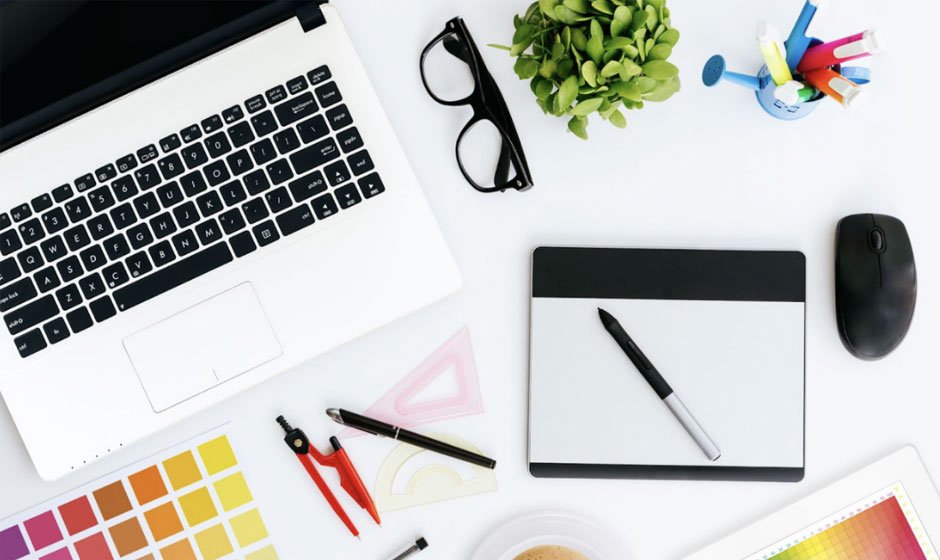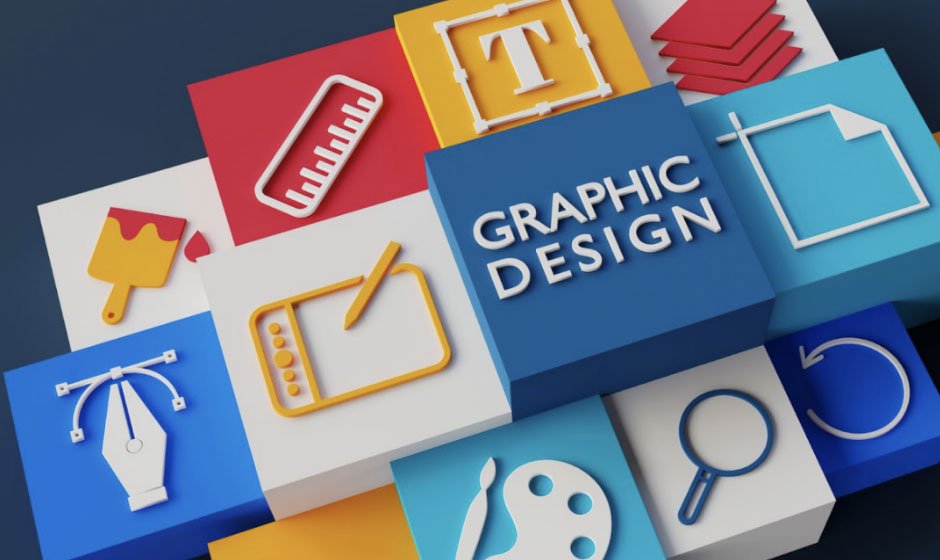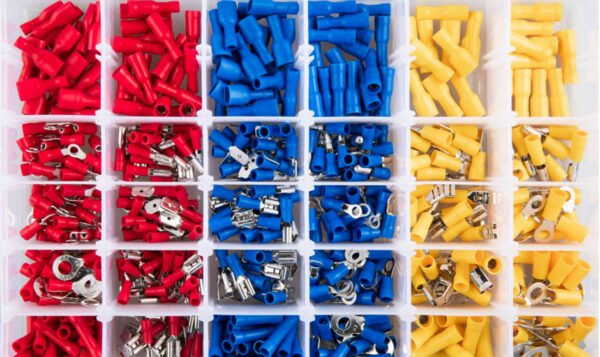8 Essential Tips for Graphic Design Enthusiasts

Being a designer encompasses crafting visually appealing and functional projects from basic elements like shapes, lines, and colors. Simultaneously, this is a complex field that requires a profound understanding of how to construct meaningful and impactful designs—ones that resonate with the intended audience and effectively convey a message or purpose. Novice designers often find themselves navigating a steep learning curve as they work to develop their design skills, gain experience, and discover the intricacies of the profession.
This article delves into visual narratives, explores different types of graphic design, and outlines the essential rules that beginners should familiarize themselves with when starting their design journey. Read on!
5 different types of design
What are the types of design, and why does this field cover so many different directions? Although it may seem like creative specialists are only responsible for the visual appeal of projects, it goes beyond that. Different types of design address various tasks, such as creating harmonious interiors, conveying messages through graphic elements, shaping a user’s interaction with a product, and more. Let’s explore the five most popular directions.
FAQ: What are the five areas of design?
Design features several directions like graphics creation, information visualization, experiential development, interaction prototyping, and user experience building.
- Graphic designers engage in delivering messages through visual narratives, which consist of fonts, colors, texts, and images;
- Information designers present complex data with easily understandable visual materials like infographics, charts, and graphs;
- Experiential designers focus on developing highly immersive and emotional environments, e.g., creative installations;
- Interaction designers (IxD) discover how elements like language, visual representations, physical objects, sounds, and spatial considerations can enhance user interaction with products and systems;
- User experience (UX) designers identify what problems specific solutions can solve for consumers.
#1 Graphic design
This design branch implies conveying ideas, information, and messages to a specific audience through visual narratives made of typography, imagery, and color. Such specialists work in offline and digital environments, collaborating with clients, marketers, and creative directors. They ensure a consistent brand representation across various media and platforms.

#2 Interior design
Interior design is the art of creating functional and aesthetically pleasing spaces, be it in residential or office environments. Professionals in this field can plan and combine elements in a way that aligns with customer desires, preferences, and styles. This involves working with spatial arrangements, natural materials, color palettes, lighting, and decor. Besides, researchers have found that a surrounding space can impact human well-being, so interior designers must take this into account when working on their projects.
#3 Industrial design
This type of design is about crafting innovative products while prioritizing their functionality and convenience. For example, it was industrial designers who introduced the automatic transmission, which replaced the manual one and considerably simplified the driving experience. These experts also focus on making products ergonomic, being responsible for developing prototypes and detailed specifications. It’s a design direction where functionality and creativity come together.
#4 User experience (UX) design
UX is a comprehensive domain that enables companies to enhance their user experience. Unlike industrial design, this area specifically focuses on the digital environment. For example, when a client searches for products on a website, places an online order, or interacts with a mobile application. When a user clicks a button and receives a response from the system, credit goes to the UX designer who skillfully planned the interaction path within the interface.
#5 Fashion design
Fashion designers craft clothing, accessories, and footwear that are visually appealing and practical. Furthermore, their products align with current cultural and stylistic trends. For example, while the fashion design era of the 19th century was marked by extravagance, practicality became the norm after World War I. Today, it’s crucial to take both of these factors into account.
FAQ: How can you make good designs?
Good designs require deep knowledge of composition, color theory, typography, and the use of space. Every visual project comprises simple details that should be skillfully combined to achieve harmony. For example, you can start by selecting a complementary color palette, textures, and fonts that align with your design’s purpose. Furthermore, you must consider the preferences and characteristics of the target audience so your composition can effectively communicate and resonate with them.
Beginner’s tips on creating graphic design projects

Delve into the following tips to enhance your skills and create your first professional-looking graphic design portfolio:
- Create mood boards before you start.Even seasoned graphic designers find it challenging to develop new ideas for their projects. To simplify this task, you can create thematic mood boards. These are visual dashboards where creators gather images, graphic elements, typography, and colors that convey the mood of their project, whether it’s something dramatic, serene, or vibrant. You can draw inspiration from design communities like Behance.
- Limit fonts in your projects to up to three.Font choice influences human emotions and perceptions; e.g., a classic serif font can evoke a sense of tradition and reliability, while a sleek sans-serif font can convey modernity and simplicity. According to Monotype.agency, typography alone can increase positive responses to stimuli by up to 13%. Nonetheless, with over 200,000 fonts available, making the right choice can be challenging. Narrow down your options to two or three fonts; you can utilize services like Fontjoy to find suitable font pairs.
- Use visual hierarchy for your content.Keeping things in order is one of the fundamental design principles. The visual hierarchy technique implies a specific arrangement of design elements to emphasize their importance. For example, headlines are critical elements and are made larger than the body text. To create a balanced visual hierarchy, you can utilize size, color, contrast, and placement.
- Incorporate contrast.By juxtaposing elements like colors, fonts, shapes, and imagery, you can create visual interest, draw attention to key components, and improve the overall impact of your designs. Experiment with contrast to add depth and clarity to your creations, ensuring they catch the viewer’s eye, highlight important parts like buttons or forms, and effectively convey your intended message.
- Ensure negative space. Design beginners may create projects that seem too intricate. This is because their content lacks “breathing”. Negative space is the open area in your project that creates balance, enhances readability, and provides a sense of visual clarity. Research showsthat incorporating this practice in art allows the recipient’s brain to relax, making it easier to remember the content.
- Consider visual patterns.Visual patterns add structure and consistency to your graphic design projects. Repetition of elements, such as shapes, colors, or fonts can create a cohesive and visually pleasing design. Moreover, people remember brands because certain features are ingrained in their memory. For example, red is often associated with Coca-Cola, and three bold parallel lines with Adidas.
- Keep things simple.Occam’s Razor principle states: “Entities must not be multiplied beyond necessity.” This is the best advice for enhancing your designs. When working on projects, it’s essential to understand the specific role of each element. For example, a headline captures attention, a line directs the user’s gaze, and a button encourages action. If an element doesn’t serve a purpose, it’s best to remove it.
- Try recreating the designs you like.You can explore design, its principles, and limitations as much as you want, but the secret lies in practice. Searching for references and analyzing mistakes can be a valuable exercise. Try picking a specific project and recreating it. The resulting design can be completely different since each creator has their unique artistic vision. Along the way, you can also stumble upon interesting ideas that boost your creativity and design thinking.
FAQ: What is the key to good design?
The key element of good design is watchfulness. When walking, reading books, watching TV series, and talking with friends, you can find unusual concepts you can represent through visuals. Plenty of great designs are based on metaphors, so it’s essential to remain attentive and open to the world around, as inspiration can come from the most unexpected places.
Conclusion
To begin your graphic design journey, prepare to explore a diverse range of intricate concepts, including font combinations, negative space, visual hierarchy, and many others. And while grasping the fundamentals is crucial, remember the importance of consistent practice and skill refinement. With dedication and perseverance, you’ll be well on your way to success in graphic design.



